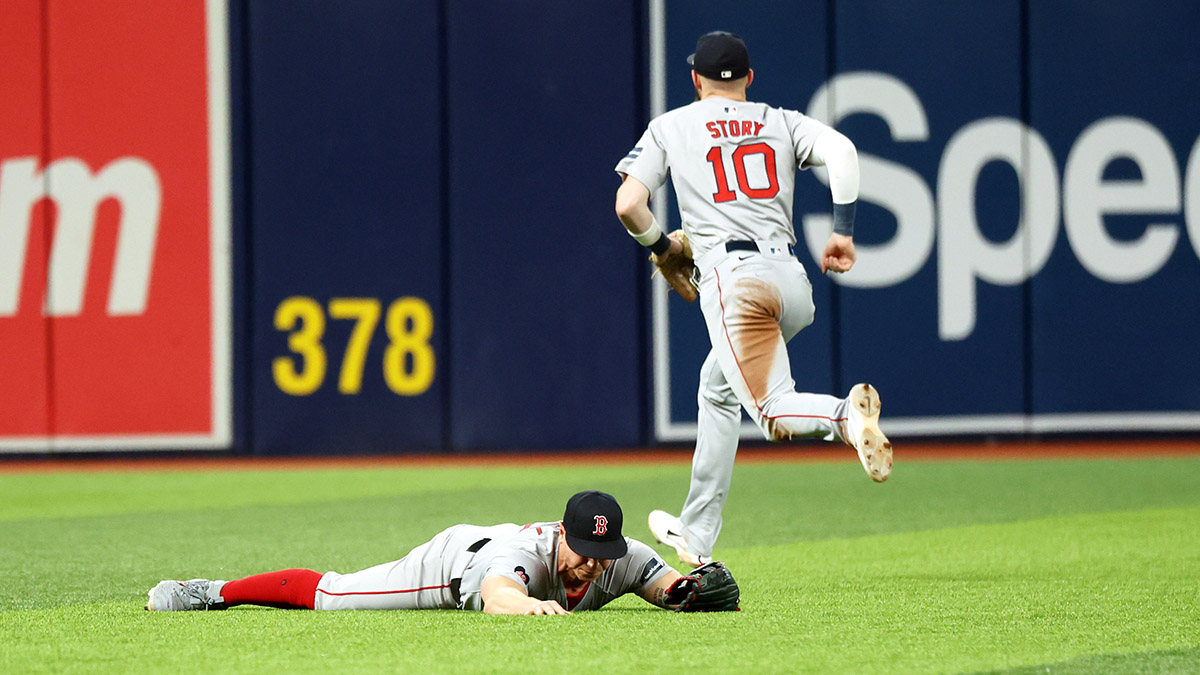Michael Jordan's most obvious connection to the Red Sox is Terry Francona, who managed him at Double-A Birmingham to great fanfare in 1994.
Lesser known is the role Jordan played a decade ago when a Red Sox superstar suffered a foot injury that His Airness understood intimately.
In June of 2010, Red Sox second baseman Dustin Pedroia was on fire. He had just completed a 5-for-5, three-homer game in Colorado when the Red Sox flew to San Francisco to finish a six-game swing through the NL West.
Get the latest news and analysis on all of your teams from NBC Sports Boston by downloading the My Teams App
In his second plate appearance vs. the Giants, however, Pedroia fouled a ball off his left foot. He was diagnosed with a broken navicular bone and placed in a walking boot. Though injuries would become a regular part of his career, to that point, the 26-year-old had been healthy, winning a Rookie of the Year Award in 2007 and an MVP in 2008.
The uncertainty left him searching for answers, and Francona knew just the man for the job, which is how Pedroia ended up on the phone with Jordan one morning.
Jordan was coming of a Rookie of the Year campaign with the Bulls in 1984-85 when he hurt his foot three games into the following season. Diagnosed with a stress fracture in his left navicular bone, he faced an option: surgery, which would likely end his season and included the risk of future complications, or rest and rehab.
He chose the latter route and the rest is history. He returned at the end of that campaign to help the Bulls squeak into the playoffs, where they put a first-round scare into the mighty Celtics behind games of 49 and 63 points from No. 23.
So when Pedroia broke the same bone, Francona reached for his phone and asked Jordan to give his fellow MVP a call.
Boston Red Sox
"It was pretty cool," Pedroia told me at the time. "It was awesome to talk to him. I mean, it's Michael Jordan."
Jordan told Pedroia that he practiced in pain on the broken bone for a week before getting the official diagnosis in early November. He was given three days to decide whether or not to undergo surgery, a difficult choice for a 22-year-old. The injury was still relatively rare and uncommon, especially for basketball players, but the risks were clear.
Surgery meant taking a knife to a tiny bone in the mid-foot connected to a muscle and tendon essential for balance. But declining surgery presented its own risks, mainly that the bone wouldn't heal properly, and that the next break would be clean.
Jordan decided to rest, returning in time to play 18 games in the regular season and then three vs. the Celtics in the first round. He had no issues with his foot for the rest of his career, avoiding the fate of big men like Yao Ming, Zydrunas Ilgauskas, and Joel Embiid, who have seen their careers stalled, limited, and in some cases ended by navicular injuries.
Jordan went on to win five MVPs and six championships after returning. Because Pedroia's injury was more serious — the foul ball cracked the bone — he faced a tougher road back. Jordan told him that rest and taking weight off the bone were pivotal to his rehab.
Pedroia tried that approach by donning a walking boot, fielding groundballs on his knees, and finally returning to action in late August. He lasted only two games, however, before deciding to undergo season-ending surgery.
Though injuries to his hands, wrists, and knee would limit him in later years, the foot surgery performed by Dr. George Theodore was clearly a success. Pedroia returned in 2011 to set career-highs in homers (21) and RBIs (91) while playing in 159 games and winning his second Gold Glove.
And for peace of mind purposes, it felt good to know he had an NBA Hall of Famer in his corner.


